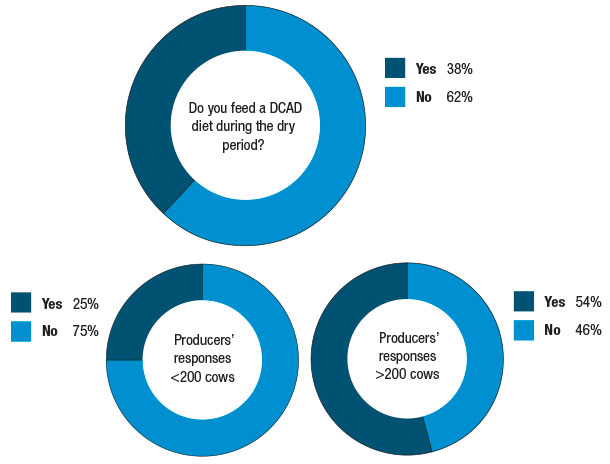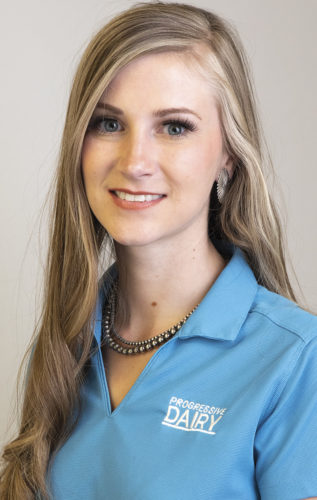According to recent phone and online polls conducted by Progressive Dairyman, most U.S. dairy farms do not feed a negative dietary cation-anion difference (DCAD) diet during the dry period.
However, the phone poll showed a difference in DCAD diet usage by herd size. Data collected indicated 75 percent of herds with fewer than 200 cows do not use DCAD. Conversely, only 46 percent of herds with more than 200 cows do not balance DCAD in their dry cow rations.
Earlier this year, Progressive Dairyman asked readers: “Do you feed a DCAD diet during the dry period?” More than 750 responses were collected online and over the phone from January through June 2018. The online poll only offered the responses “yes” or “no” as options.
Farmers who answered “no” in the phone survey were asked why they do not use a DCAD diet for the dry period.
A large number of dairies that reported they do not feed a DCAD diet during the dry period indicated they did not know what DCAD was or had never heard of it.
 Another large group of respondents said they don’t feed a DCAD-sensitive ration because they “did not need to” and “never had a reason to start.” These farmers said they felt like what they have been doing works, and a DCAD formulation was unnecessary.
Another large group of respondents said they don’t feed a DCAD-sensitive ration because they “did not need to” and “never had a reason to start.” These farmers said they felt like what they have been doing works, and a DCAD formulation was unnecessary.
“I am having success with what I am doing now. I try not to tamper with that success,” said one reader in Washington with more than 500 cows.
Some dairy farmers rely solely on their nutritionists to understand and formulate their ration ingredients, including for DCAD. The decision to use DCAD in the dry cow diet for these dairies is left up to whether their nutritionists recommend it.
“I’m not familiar with DCAD,” one reader from Ohio said with 100-plus cows. “My nutritionist has a mix we feed to our dry cows, but I’m not sure what all is in it.”
“I just do what my nutritionist tells me to do,” said one reader from Wisconsin with more than 100 cows.
Others said they had tried incorporating a DCAD dry cow diet before, but it did not work as expected.
“I have tried it in the past but didn’t feel like I had the results to make it worth it,” one reader from Pennsylvania with 200-plus cows said.
Another reader from Ohio with more than 200 cows said he does not feed a DCAD diet because he does not have his far-off dry cows separated from his close-up dry cows so he could feed a DCAD diet properly.
Last, a reason why farmers said they choose not to formulate for DCAD in their dry cow ration is because the price of milk is too low, and the cost is too high.
“I do feed some DCAD but not a lot. It depends upon the prices,” said a reader from Arizona with 1,000-plus cows.
Another reader from Maine with 200-plus cows said, “I’m just lucky to keep them fed at all. The costs just keep going up.” ![]()

-
Audrey Schmitz
- Editor
- Progressive Dairyman
- Email Audrey Schmitz








